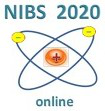Speaker
Description
The ELISE test facility with its half ITER-size ion source is an essential part of the European Roadmap towards the ITER NBI system. One aim of ELISE is to demonstrate the ITER target values for the extracted current density, the ratio of co-extracted electrons to extracted ions and the uniformity of the extracted beam during long pulses, i.e. $1000\,\mathrm{s}$ in hydrogen and $3600\,\mathrm{s}$ in deuterium and at a filling pressure of $0.3\,\mathrm{Pa}$.
Due to limitations in the available HV power supply, operation of ELISE is currently limited to pulsed extraction, i.e. short extraction phases, so-called extraction blips, of up to $10\,\mathrm{s}$ each ${\approx}150\,\mathrm{s}$. During the past years, a good insight in the physics of this operational mode was gained in both hydrogen and deuterium operation. $1000\,\mathrm{s}$ hydrogen plasma pulses with repetitive extraction blips are possible with an extracted current density of over $90\,\%$ of the ITER target value, while also fulfilling the requirements for the electron-ion ratio and the beam homogeneity. In deuterium roughly 67 % of the ITER target for the extracted current density has been achieved for long pulses.
During such pulses an overall increase of the co-extracted electron current is typically observed between one blip and the next, even though the electron current is observed to actually decrease during each blip. These opposing effects are explained by different caesium dynamics during the source plasma phase when compared to the beam phase and they were one motivation behind the currently ongoing upgrade of ELISE to a CW extraction system. Being able to achieve beam pulses of up to 1 hour will allow knowledge to be gained on the physics of caesium redistribution and conditioning over the long timescales needed for ITER operation.
This update consists of two main hardware changes: i) installation of a new CW high voltage power supply and ii) installation of a CW beam calorimeter. Delivery and commissioning of the CW high voltage power supply as well as first tests using a dummy load are planned for summer 2020. First operation of ELISE using the CW power supply will take place at the end of the year. A CW calorimeter design developed at IPP is currently being tested at the BATMAN Upgrade test facility.
The presentation discusses the physics of pulsed beam extraction and the differences to CW extraction. Additionally, the status of both systems, the CW power supply and the CW calorimeter and first results of the CW calorimeter prototype used at BATMAN Upgrade will be presented.

